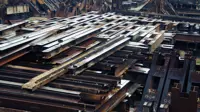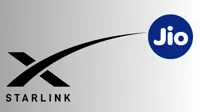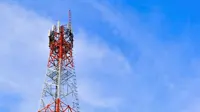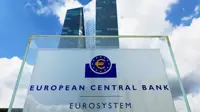Cabinet clears decks for buying 36 Rafale fighter planes
22 Sep 2016
The Union cabinet on Wednesday cleared the long-delayed deal to buy 36 fighter jets from France's Dassault Aviation.
 The green signal for deal worth €7.87 billion was given in a meeting presided by Prime Minister Narendra Modi. It will be signed on Friday in presence of French Defence Minister Jean Yves Le Drian.
The green signal for deal worth €7.87 billion was given in a meeting presided by Prime Minister Narendra Modi. It will be signed on Friday in presence of French Defence Minister Jean Yves Le Drian.
Defence sources said that deal for the aircraft, the first fighter jet deal in 20 years, comes with a saving of nearly €750 million over the deal agreed by the previous United Progressive Alliance government, which was scrapped by the Narendra Modi government, besides a 50 per cent offset clause.
This means business worth at least €3 billion for Indian companies, both big and small, and generating hundreds of jobs in India through offsets.
The Rafale fighter jets, deliveries of which will start in 36 months and finished in 66 months from the date contract is inked, come equipped with state-of-the-art missiles like Meteor and Scalp that will give the Indian Air Force a capability that had been sorely missing in its arsenal.
Sources said the government on Wednesday formally cleared the Inter-Governmental Agreement to be signed on Friday in the presence of Drian who arrives on Thursday evening along with CEOs of Dassault Aviation, Thales and MBDA and top government officials.
The contract for the deal was already cleared by the Cabinet Committee on Security earlier. The price of the contract was fixed in May, sources said.
Reports say the "plain vanila price" (just the 36 aircraft) is about €3.42 billion. The armaments cost about €710 million while India-specific changes, including integration of Israeli helmet mounted displays, will cost €1,700 million. The rest of the cost includes spare parts and maintenance among others.
Other features that make the Rafale a strategic weapon in the hands of the IAF is the Beyond Visual Range (BVR) Meteor air-to-air missile with a range in excess of 150 km.
Its integration on the Rafale jets will mean the IAF can hit targets inside both Pakistan and across the northern and eastern borders while still staying within India's own territorial boundary.
Pakistan currently has only a BVR with 80 km range.
During the Kargil war, India used a BVR of 50 km while Pakistan had none. With the Meteor, the balance of power in the air space will again tilt in India's favour.
Scalp, a long-range air-to-ground cruise missile with a range in excess of 300 km, also gives the IAF an edge over its adversaries.
The tough negotiations by the Ministry of Defence-IAF team extracted many concessions and discounts from the French before arriving at a price that is almost €750 million less than what was being quoted by the French side in January 2016.
This was when the commercial negotiations gathered pace, almost seven months after Prime Minister Narendra Modi announced India's intention to buy 36 Rafales off the shelf from France during his trip to Paris in April 2015.
The French side had quoted a price of €8.6 billion Euros in January following which India refused to sign the contract.
This forced both the countries to just sign a memorandum of understanding and French President Francois Hollande's announcing their intention to sign an IGA.
To bring down the cost, the India asked French officials to calculate the deal on actual cost (price as of today) plus European Inflation Indices.
The defence ministry has capped the European Inflation Indices to maximum 3.5 per cent a year. In other words, if inflation Indices goes down, India will have to pay less. Even if it goes up India will not pay more than 3.5 per cent increase, sources said.
After Dassault Aviation emerged as the winner, the UPA government had agreed with French officials to calculate the price on the fixed cost formula that allowed the company to include additional price of 3.9 per cent inflation indices from day 1 of the deal.
So, had the deal gone ahead, India would have ended up paying additional cost of inflation Indices (@3.9 per cent) which was already added at the initial negotiation stage.
Moreover, there was confusion on the calculation of the basic price itself.
In the original MMRCA proposal, 18 planes were to be manufactured in France and 108 in India in collaboration with Hindustan Aeronautics Ltd.
It was later discovered that the cost of 108 fighters would go up by about Rs150 crore per plane since the labour man hours in India were 2.7 times higher than in France, raising questions about the French firm being the lowest bidder.
Interestingly, then defence minister A K Antony had put down on file a remark that the negotiating team must come back to him before finalising the contract, creating more confusion for the negotiators.
However, new current deal comes with several discounts, sources said.
For instance, Dassault will have to ensure that at least 75 per cent of the entire fleet remains operational at any given time. This warranty is signed for the first five years.
Despite several steps taken by the defence ministry over the last three years, 60 per cent of India's frontline fighters, the Sukhoi-30 fleet, remains operational at any given time, up from the dismal 48 per cent earlier, sources said.
Three other concessions include free training for nine IAF personnel, including three pilots besides additional guarantee for 60 hours of usage of training aircraft for Indian pilots and six months of free weapons storage without charge (in case the Indian infrastructure is not ready for storing the weapons).
President Francois Hollande and Prime Minister Narendra Modi intervened in the procurement for the Rafale jets in 2015, ordering government-to-government talks after several years of commercial negotiations with Dassault had collapsed.
The leaders agreed to scale back an original plan to buy 126 Rafale planes to just 36 in fly-away condition to meet the Indian Air Force's urgent needs as it tries to modernise and face an assertive China and long-time foe Pakistan.
The fighter deal is part of a $150-billion military overhaul India has launched, drawing global arms makers into one of the world's biggest markets.









.webp)














